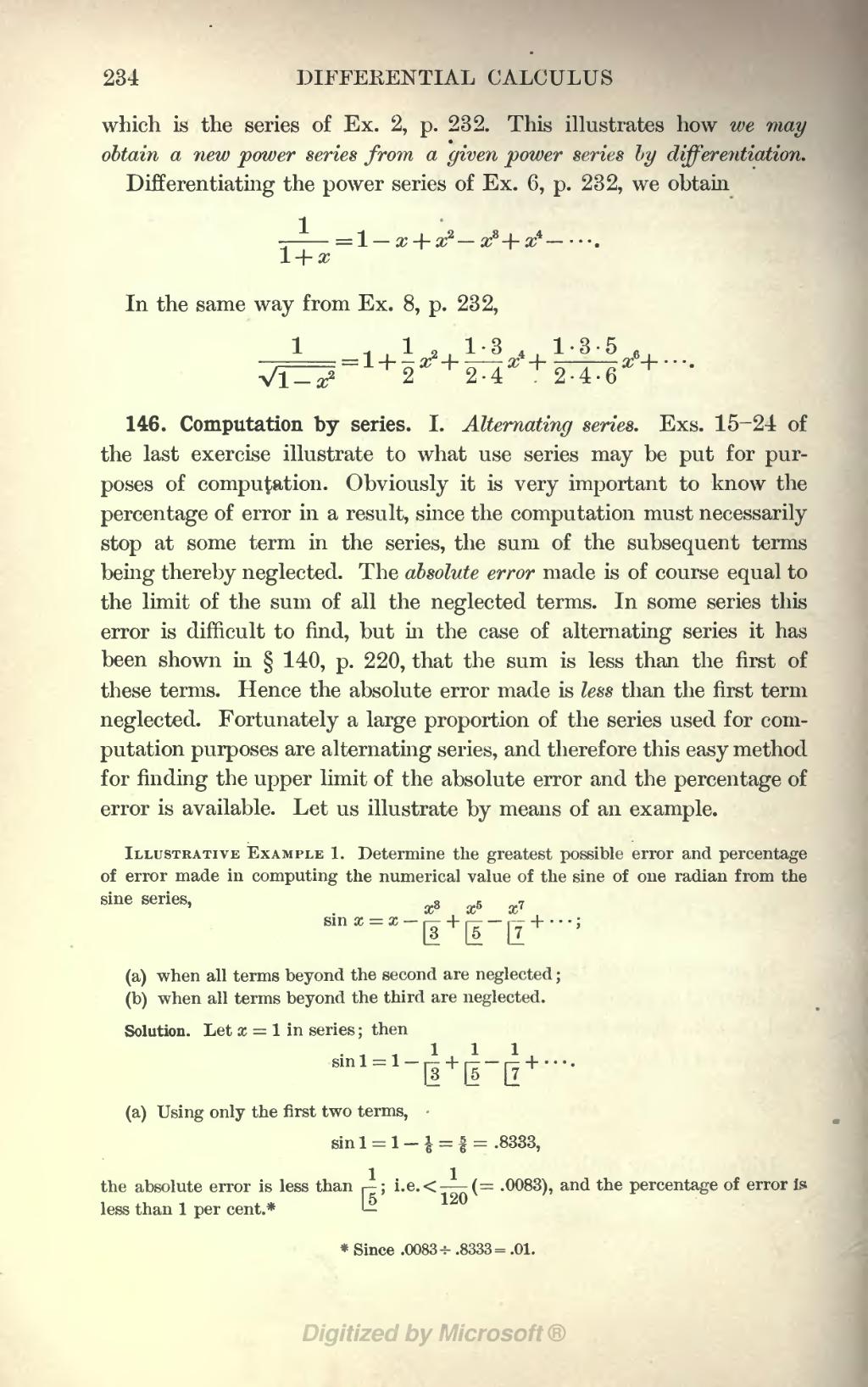which is the series of Ex. 2, §145. This illustrates how we may obtain a new power series from a given power series by differentiation.
Differentiating the power series of Ex. 6, §145, we obtain
In the same way from Ex. 2, §145,
146. Computation by series. I. Alternating series. Exs. 15-24 of the last exercise illustrate to what use series may be put for purposes of computation. Obviously it is very important to know the percentage of error in a result, since the computation must necessarily stop at some term in the series, the sum of the subsequent terms being thereby neglected. The absolute error made is of course equal to the limit of the sum of all the neglected terms. In some series this error is difficult to find, but in the case of alternating series it has been shown in §140 that the sum is less than the first of these terms. Hence the absolute error made is less than the first term neglected. Fortunately a large proportion of the series used for computation purposes are alternating series, and therefore this easy method for finding the upper limit of the absolute error and the percentage of error is available. Let us illustrate by means of an example.
Illustrative Example 1. Determine the greatest possible error and percentage of error made in computing the numerical value of the sine of one radian from the sine series,
- (a) when all terms beyond the second are neglected;
- (b) when all terms beyond the third are neglected.
- Solution. Let in series; then
- (a) Using only the first two terms,
- the absolute error is less than ; i.e. , and the percentage of error is less than 1 per cent.[1]
- ↑ Since .










